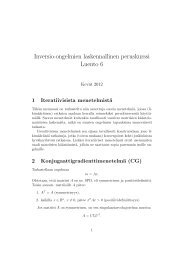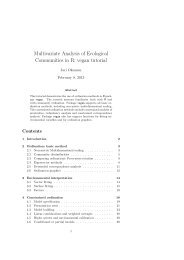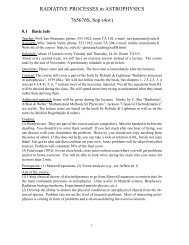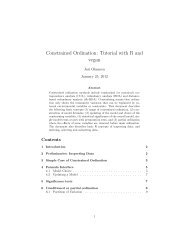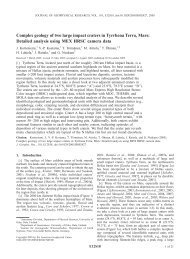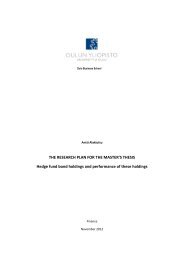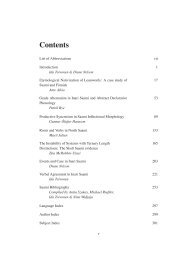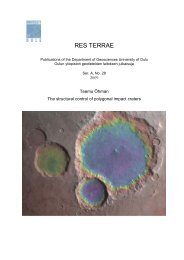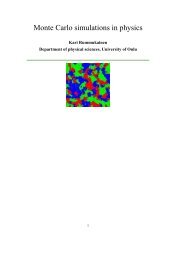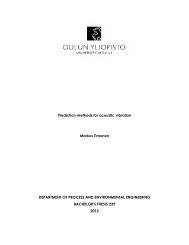Juha Köykkä - Oulu
Juha Köykkä - Oulu
Juha Köykkä - Oulu
- TAGS
- juha
- oulu
- cc.oulu.fi
Create successful ePaper yourself
Turn your PDF publications into a flip-book with our unique Google optimized e-Paper software.
Res Terrae, Ser. A 32, J. <strong>Köykkä</strong>, Sedimentology of the Mesoproterozoic Telemark basin-fills, South Norway: implications for<br />
sedimentation processes, depositional environments and tectonic evolution<br />
Rjukan Group and, consequently, is either a part of the Rjukan Group or is possibly<br />
correlated with the lower part of the overlying Vindeggen Group. In addition, Bingen<br />
et al. (2001, 2005) analyzed a detrital zircon sample from the Hallingdal gneiss and<br />
quartzite complex near the Åmot-Vardefjell shear zone. This zircon data indicated that<br />
the complex was deposited after 1.71 Ga and that it represents a possible depositional<br />
basement for the Rjukan Group. The analyzed sample from the Hallingdal gneiss and<br />
quartzite complex contains detrital zircons ranging from 3.13 to 1.71 Ga, although a<br />
depositional age younger than 1.51 Ga is still possible (Bingen et al., 2001, 2005).<br />
Fig. 3. A simplified geological map of the study area. The Telemark block is dominated by the felsic<br />
Tuddal Formation, volcanic-sedimentary Vemork and Heddersvatnet Formations, and sedimentary<br />
Vindeggen Group. The early Sveconorwegian units are located west and east side from<br />
the town of Rjukan. Thick black lines indicate major fault and shear zones. HF: Heddersvatnet<br />
Formation. Circles with Roman numbers indicate study locations reflecting Paper number.<br />
30



